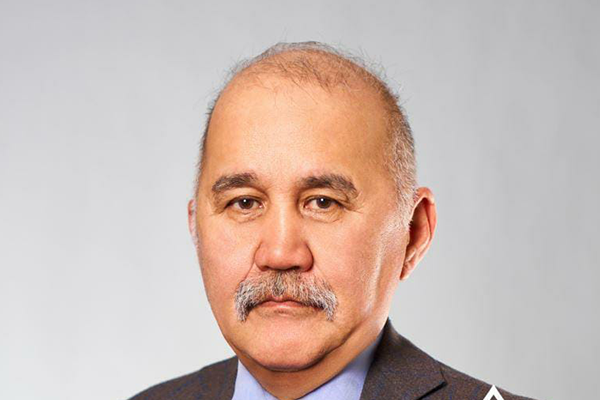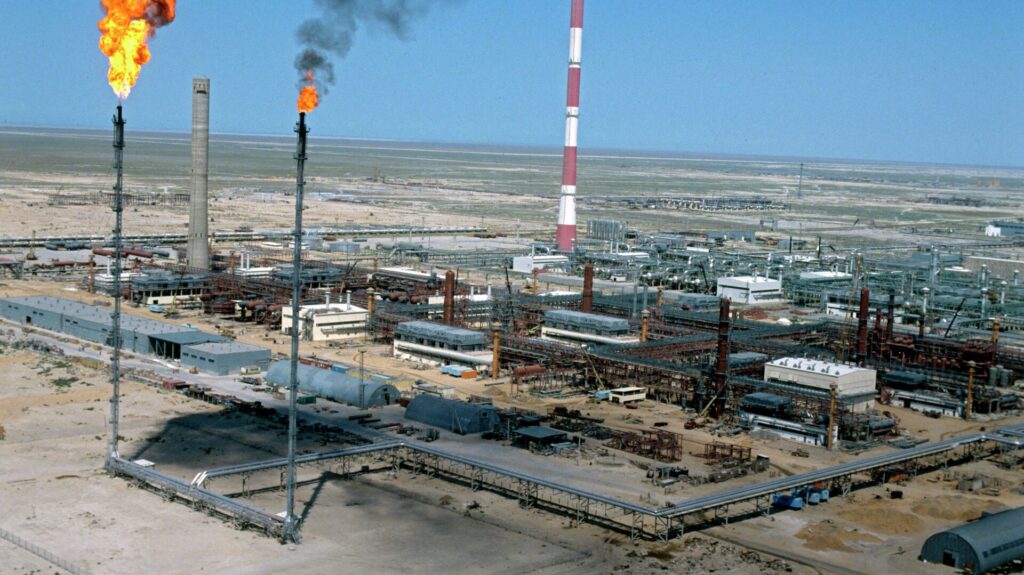
Why does Kazakhstan need a gas processing plant without gas?!
In 10 years the “contract of the century” for the development of the Tengiz field will expire. We discussed with a technical expert, a prominent Kazakh oilman Sultan Tkenbayev who shared his thoughts about the status of this major project on the eve of the commissioning of the Third Generation Plant (FGP),
Sultan Tkenbaev is a disciplinary expert and was awarded the state medal “Eren enbegi ushin” (for significant contribution). In 1979 he graduated from the Kuibyshev Polytechnic Institute with a degree in oil and gas field exploitation with the qualification of a mining engineer. Worked at Zhetybayneft field, Komsomolskneft of the Mangyshlakneft, the Caspian Drilling Department at Embamunaigas, Samotlorneft in Western Siberia. Since 1989 he worked at the Tengiz field as part of the Tengizneft, at the Tengiz gas processing plant as well as took part in the launch of the Tengiz field and the TCO Second Generation Plant. Later he worked as the director of the department for the development and development of offshore fields, as the deputy general director of KazMunayTeniz. He also worked at PSA as a general manager for project development, and later at KMG Engineering LLP where he managed several projects as a deputy general director for development.
– Sultan, you have been actively commenting on events in the oil industry and you write a lot about Tengiz. Next year we expect the Future Generation Plant where TCO’s oil production will reach 39 million tons. However, in your posts you do not share the optimism about this. What is it connected with?
– The fact is that a full start within the third expansion at Tengiz will occur only by 2025. The first stage that is started next year will not bring additional production for either TCO or Kazakhstan. We are talking about the so-called Wellhead Pressure Management Project (WPMP) when the transition from the high-pressure oil gathering to the low-pressure oil gathering mode will take place.
When we opened Tengiz the oil gathering was at high pressure, about 110 bar at the wellhead and 70 bar at the plant. Now, due to a stable decrease in reservoir pressure and wellhead pressure slug catchers have been installed as part of the WPMP to reduce the pressure in the oil gathering to 25-30 bar. Since the production facilities and gas treatment technology at existing plants are designed for a pressure of 70 bar compressors and pumps are additionally installed at the WPMP to increase pressure and maintain the current operation of existing plants. That is, we get the same volumes of oil produced at the first stage, just all the wells will work in a light mode and at the wellheads the pressure will be 40-45 bar.
Additional volumes of oil will be provided by the commissioning of the FGP which does not have a gas treatment unit and hydrogen sulfide utilization. This plant was originally built to operate at low pressure and the entire associated gas will be injected into the reservoir.
You also raised the issue of gas shortages in the future. How much gas does TCO consume for own needs?
– About two billion cubic meters go to our own gas power station which will ensure the operation of KTL and two plants. We remove this volume from 9 billion. In addition, it is planned to build a gas separation plant at Tengiz for the subsequent production of polyethylene (KLPE project). This is another minus 13% for the extraction of ethane. In fact, only 5.8-6 billion cubic meters of Tengiz gas will remain in the country and all associated gas as part of the expansion of the project will go to maintain pressure for oil production. In the future Tengiz is waiting for a further drop in production – this is another minus 2 billion cubic meters. Thus, having gas reserves we will be without gas. Therefore, we have a reasonable question – will we need both existing and upcoming gas processing plants?

– How can we solve this situation?
– You cannot stop both KTLs!
(Clarification from Petrocouncil: These are processing lines built and supported the production activities of TCO before the construction of the Second-Generation Plant)
– Is TCO planning this?
– This is in their strategy because the plants are thirty years old but they can work longer …
– Is there any point in investing in capital overhaul since the contract expires?
– Yes, if you maintain plants in a timely manner, replace equipment, everything will work in 50 and 60 years. Look at the Orenburg refinery or Atyrau refinery?! Or the same Chevron plant which has been operating in downtown Los Angeles since 1911.
– Is this issue the subject of negotiations with Chevron currently?
– I don’t know. I only know what is published in official sources. My opinion – the FGP project is an unsuccessful project! This factor is also responsible for the growth of its value from $24 billion to $47 billion. In my opinion the reason is poor planning.
Think yourself, there is little time left before the end of the concession and more oil needs to be extracted. There is an order to increase the productivity of the plant and they have already begun preparing detailed drawings and procure equipment. Then, problems start as numerous changes resulting in a sharp increase in cost. The problem is exacerbated by the fact that FGP is built in a modular way. Any change to increase the performance within the module entails a change in the volume of the module and its weight. All modules were made in the West where labor costs are high, and modules are transported by various seas and rivers across the world to Tengiz. But imagine if we are talking about large modules that are large for river barges, the module must be disassembled and delivered in parts to the Prorva offshore facility where it is assembled and only then transported to Tengiz. Add to this time limits caused by the short shipping period because the rivers are frozen in winter.
Almost the entire plant is built in modular design. Due to alterations at the Korean shipyard, they even opened a second installation site, although this was not originally planned. That’s how the project got more expensive.
A popular version is that by choosing a modular method TCO wanted to avoid the risk of concentrating thousands of workers on the project so that the events of 2006 (a conflict between Kazakh and Turkish workers with numerous victims) would not be repeated.
– I also heard this version but I did not see the difference. At the peak of construction at Tengiz there were the same 30,000 workers. As a technical expert I saw the desire of investors to increase the productivity of oil production by reducing pressure, injecting gas, and building new infrastructure. And then, after 2033 you can get it.
– Do you have any vision of what will happen after the expiration of the contract in 2033? How will the process of transferring the Tengiz field to Kazakhstan take place?
– I believe that negotiations are underway to extend the contract because with the current oil price Chevron does not recoup the invested costs. The optimal price for them is $150 per barrel and now the project is running at a loss.
– Thanks for the interview!
